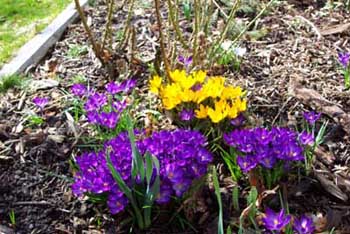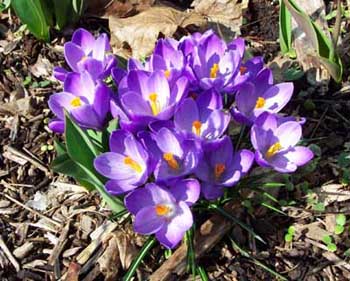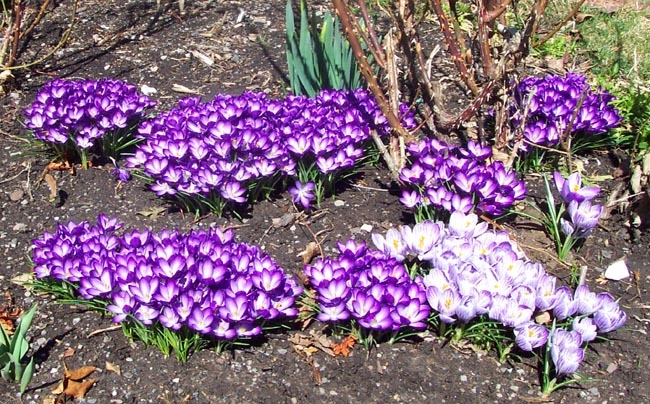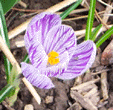






Snow crocuses are aptly named, as they are the earliest of spring flowers. Crocus plants can be found bursting into bloom, while snow is still on the ground. These hardy flowers begin to grow with a warm spell in late winter or early spring. If it snows again before they bloom, or during bloom, that's okay. They will be unharmed. It only takes a few days growth to blossom into the first bright colors of the year.
Did You Know? We think of Crocus asan early spring blooming bulb. But, some varieties of Crocus bloom in the fall.

Crocus are native to Southern Europe and Asia, Crocuses are as popular in other parts of the world, as they are in your own back yard. Their early blooms brightens up the landscape around the world with white, yellow, blue, and light orange flowers above thin grass-like leaves. These small plants grow just 3-4 inches tall. Best of all, they are easy to grow, and very prolific.
While many people refer to them as bulbs, Crocus plants actually grow from corms, a bulb-like stem.
Not only are crocuses good flowers in the garden, they make good houseplants. You can easily force Snow Crocus to bloom indoors. Learn how to Force Bulbs.
Did you know? The word "Crocus" is Latin for Saffron. Knowing this, it should not surprise you that Saffron comes from the stigma of the Saffron Crocus. But, it takes thousands of flowers to get an ounce of Saffron.

Plant Propagation:
 Crocus are
grown from corms, a bulb-like stem. The mother corm will produce several
baby corms, then usually die in the same year. The new corms can be dug up
and separated to be replanted. Make sure to mark and keep colors separate,
if you want to create a design in the new bed.
Crocus are
grown from corms, a bulb-like stem. The mother corm will produce several
baby corms, then usually die in the same year. The new corms can be dug up
and separated to be replanted. Make sure to mark and keep colors separate,
if you want to create a design in the new bed.
How to Grow Crocus Plants:
 Plant crocuses
singly, or in groups. We do not recommend planting a large number of them
close together, as they will rapidly multiply. In a year or two, that small
group will become a major clump of attractive plants, regardless of how many
you plant together. Fortunately, Crocus plants will tolerate overcrowding.
Plant crocuses
singly, or in groups. We do not recommend planting a large number of them
close together, as they will rapidly multiply. In a year or two, that small
group will become a major clump of attractive plants, regardless of how many
you plant together. Fortunately, Crocus plants will tolerate overcrowding.
Plant Crocus corms in the fall. Select a sunny location where the soil is not too wet or soggy over winter and during spring. Most importantly, select a spot where you can see them from a window of your house. You don't want to miss the first show of the year!
First work the soil, adding compost to provide a rich bed for growth. Mix into the soil a generous portion of bulb fertilizer. Plant corms singly, or in groups as desired. These small corms can be planted using a trowel, a bulb planter, or just pushing them into soft soil to the proper depth of about 2 inches from the top of the corm. Add a thin (not thick) layer of mulch on top, if desired.
Insects, Pests, and Disease:
 Crocuses
are resistant to insects and disease. But, squirrels like to snack on newly
planted corms. If you have squirrels in the neighborhood, provide some protection
for your helpless corms! You can cover the area with a screen until winter
snow arrives. Or, you can spray the area with a repellent.
Crocuses
are resistant to insects and disease. But, squirrels like to snack on newly
planted corms. If you have squirrels in the neighborhood, provide some protection
for your helpless corms! You can cover the area with a screen until winter
snow arrives. Or, you can spray the area with a repellent.
Copyright © www.100flowers.win Botanic Garden All Rights Reserved